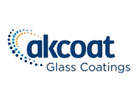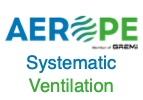Compared to glass alone, the National Fenestration Rating Council (NFRC) performance ratings of window units typically vary in several ways that may not be immediately apparent. To understand why window units and the glass lites with which they are fabricated may offer different performance values, let’s first review the key performance metrics of architectural glass and then discuss why window units have different performance values than glass components alone.
Key Performance Metrics of Glass
Visible light transmittance (VLT) is a percentage of the visible portion of the solar energy spectrum coming through the glass, which is expressed as a figure between 0% (no light) and 100% (all light).
Solar heat gain coefficient (SHGC) is the fraction of incident solar radiation transmitted through a window, both directly transmitted and absorbed and subsequently reradiated inward. SHGC is defined as a number between 0 and 1 and is always expressed in decimal form. The lower a window’s SHGC, the less solar heat that is transmitted through it. Furthermore, the lower the SHGC, the less energy is required for cooling.
U-value is a measure of the heat transmission through a window with lower numbers indicating better insulating properties
These performance metrics vary among products, product categories and manufacturers. Generally, for best performance, designers aim to specify products that offer lower U-values, lower SHGC and higher VLT.
Glass vs. Window Performance Metrics
Industry standards dictate that the rating for a window product represents the entire window unit, including the glass edges and framing materials – because consumers don’t just buy the glass itself, but the entire unit in which it is framed.
All performance metrics relating to glass can be determined for the center of glass (COG), which only takes into account the performance of the glass components and gap characteristics. Since the whole window takes into account the effects of the glass edge system including the frame, the COG is a good measure to compare glass products on their own merits without the effect of the edge.
To offer a whole window U-value rating, window manufacturers take center of glass U-values directly from glass manufacturers and engineering product information such as thermal conductivity from frame material manufacturers, insulating glass spacer manufacturers, and other component suppliers, and utilize NFRC procedures to calculate the rate of heat transfer at NFRC standard environmental boundary conditions. A U-value or U-factor for the whole window product is subsequently reported.
The most commonly referenced NFRC environmental boundary condition is winter nighttime which is generally described as 0°F with 15 mph wind exterior and 70°F interior. Winter nighttime U-values generally range from ~0.20 (very low heat transfer rate) to 1.2 (high heat transfer rate). NFRC labels for fenestration products include U-Factor expressed as U.S / I-P with actual units of measure being Btu / hr. ∙ ft2 ∙°F.
However, NFRC window performance ratings do not consider how a window unit is installed, but only how it is manufactured.
What Differential Values Mean
While glass manufacturers can easily calculate COG U-values of their own products, glass edge values are more complicated because they include thermal conductivity of the insulating glass unit spacer system. To account for this, advanced computer calculations using finite element methodology are required.
Typically, the U-value of a window unit is higher than the U-value of the glass itself.
Additionally, the VLT of the window unit is reduced compared to the glass alone because the framing pieces of the window unit prevent visible light from passing through the glass edges.
However, this doesn’t necessarily mean that window units offer poorer performance values compared to glass alone across the board. In fact, window framing materials actually lower the SHGC of the unit as compared to glass alone because it reduces the amount of transparent material through which solar heat can easily pass compared to non-transparent framing materials.
Ultimately, the best way to secure the highest possible performance ratings from window units is to select products that are manufactured using energy-efficient window components for the glass, edge seal system and framing. A good starting point is to utilize architectural glass products that can offer industry-leading performance even after being fabricated into window units.

























